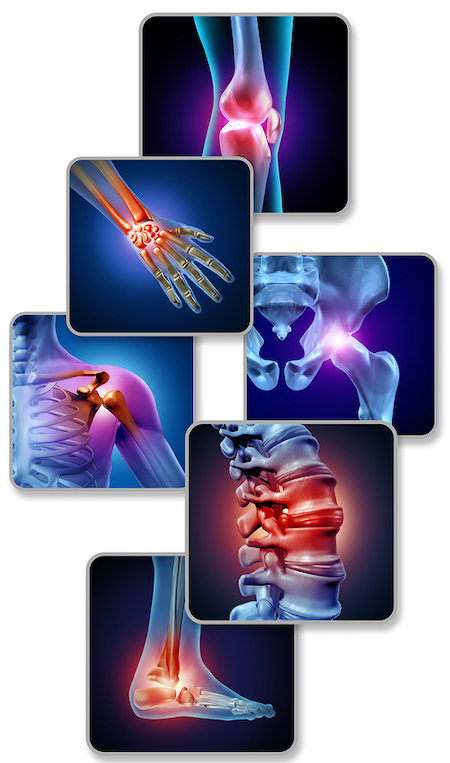Thousands of people sustain injuries in car accidents every day across the United States. If you were injured in a car accident because of someone else’s negligence or recklessness, an experienced car accident lawyer can help you understand the legal process of obtaining compensation for your injuries.
You Might Feel Fine, But…
In a car accident and similar stressful or threatening situations, our bodies release adrenaline, also known as epinephrine. This hormone, which is produced by the adrenal glands—which are located on top of each kidney—is known as the “fight-or-flight” hormone. It is released in certain situations when the body feels that it needs to prepare itself for impending danger or doom.

The release of adrenaline causes changes in the body, including:
- An increased heart rate
- Increased perspiration
- Dilation of the pupils of the eyes
- Faster breathing
- Decreased ability to feel pain
- Increased strength or performance
- The feeling of being jittery or nervous
- Heightened senses
Once the activity that caused your adrenaline rush is over, the effects of the adrenaline on your body may persist for up to an hour. The unfortunate thing about adrenaline after a car accident is that the decreased ability to feel pain may mask the severity of the injuries suffered and cause an individual to believe that he or she doesn’t need medical treatment.
Seek medical treatment after a car accident not only due to the effects of adrenaline but also because some injuries present delayed symptoms. These injuries can include:
- Traumatic brain injuries. You bumped your head in the accident, but you are talking and walking at the scene. Aside from a headache, you seem fine and you decline to be treated. Hours later, you are dizzy and confused. You feel nauseous and the headache has worsened. You may have suffered a traumatic brain injury.
- Internal injuries. Internal bleeding is an invisible injury often caused by the force of an object such as a seat belt or the steering wheel against your body during the crash’s impact. While you do not feel bad at the accident scene, later you find yourself experiencing a stomach ache. You are light-headed and your skin feels clammy. As it turns out, you’ve been bleeding internally for hours and now it’s a medical emergency.
- Neck and shoulder injury. At the time of the accident, you were not experiencing much pain. The following morning, however, your neck is stiff and you have pain in your shoulders. You may have sustained damage to soft tissues, or you could even have damage to your neck and spine.
Types of Injuries and What to Expect During Recovery
A trip to a Dutch Bros. in Las Vegas ended unexpectedly when a customer’s vehicle was struck and overturned in the drive-through line. The accident occurred when the driver of a speeding black Dodge swerved to miss a vehicle making a left turn. The driver of the Dodge then lost control of the vehicle, driving up the embankment and striking the customer’s car. The impact of the crash caused the car to overturn, injuring the customer, who was later transported to the hospital.
Common injuries experienced in such a car accident require specific types of treatment that medical professionals can only prescribe. Here is a look at these injury types and what to expect.

- Head injuries: Even a mild traumatic brain injury, known as a concussion, can produce long-lasting problems. If you bumped your head in a car accident, get a medical evaluation right away, no matter how you feel. While concussions generally require rest as the main component of treatment, your physician can evaluate you to ensure that the injury is not more severe and in need of hospitalization. One important aspect that the doctor will be looking for is the potential of bleeding within your skull, which can result in far more serious damage. The recovery time for most individuals experiencing a concussion is two to three weeks.
- Facial injuries: If you have injured your face in the accident, you may need stitches for deep or long cuts. A medical professional can thoroughly clean and bandage scrapes. You will also want an evaluation to rule out fractures to the bones in the face. Cuts and scrapes should be healed within a few days to weeks. Surgical repairs may require weeks or months for healing to take place.
- Neck and shoulder injuries may be treated with over-the-counter pain relievers. However, an evaluation should be done to rule out more serious injuries such as damage to the vertebra that would require surgery. So-called “whiplash” pain may take several weeks to months to subside. Surgical repairs may also result in a recovery of at least a few months.
- Collarbone and rib injuries: This type of injury is generally the result of the force of your body against a seat belt, but is almost always a more preferable outcome than the injuries that would have been sustained if you hadn’t been wearing a seat belt. Collarbone injuries generally heal on their own with the use of a brace to immobilize the arm so healing can take place. The recovery time for collarbone and rib injuries can be as long as 16 weeks.
- Back and spinal cord injuries: This type of injury is one of the most severe, as spinal cord injuries can result in paralysis. Surgery may be required. Recovery time depends on the severity of the injury and which part of the back’s structure was injured. Minor muscle strains may heal within a few weeks. However, if the injury involves the spinal cord, the damage may be permanent.
- Lower extremity injuries: While the seat belt and airbags work to protect the upper part of the body, including the head and chest, the lower extremities are often unprotected in an accident. It is not unusual for accident victims to break a leg or foot, with recovery time for such an injury being eight weeks or more, depending on the severity of the break.
If you were injured in a car accident, contact an experienced car accident injury attorney today.
Benson & Bingham Accident Injury Lawyers, LLC
626 S 10th St
Las Vegas, NV 89101
702-382-9797

